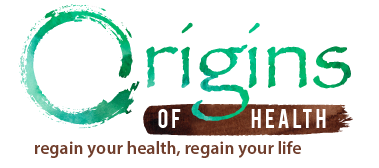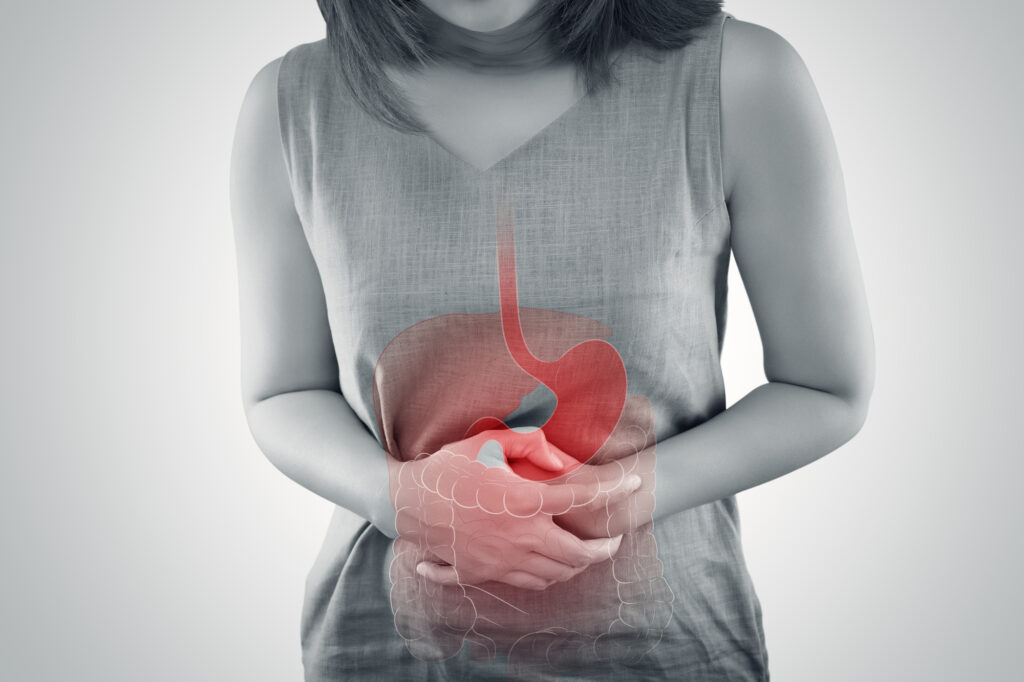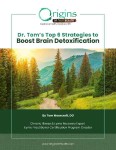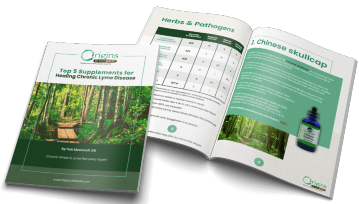In our ceaseless quest for wellness, two silent players often dictate our vitality – inflammation and digestive health. In a world pulsating with pollutants, understanding their relationship and crafting an optimal strategy becomes paramount.
UNMASKING ACUTE INFLAMMATION
Inflammation is our body’s shield against invaders like bacteria and viruses, marshalled by white blood cells and chemicals. Yet, as this intricate defence system operates, an appreciation for the fine line between protection and affliction is essential.
A Glimpse of Acute Inflammation:
- Redness at the site of inflammation
- Swelling and warmth, especially in joints
- Joint pain that impedes movement
- Joint stiffness, impairing flexibility
- Loss of joint function, limiting mobility
- Beyond localized symptoms, the body might evoke flu-like responses, including fever, chills, fatigue, headaches, diminished appetite, and muscle stiffness
But amid the tumult of health concerns, the gut takes center stage. Often the genesis of medical consultations, it houses a parade of organs – the stomach, liver, gallbladder, and more – all weaving a symphony of nutrient absorption and waste disposal.
HARMONY OR HAVOC IN THE GUT?
However, disruption in this orchestration can have far-reaching consequences. A compromised gut fails to extract vital nutrients while permitting unwarranted entry to toxins. Within this labyrinth resides an army of bacteria, contributing to digestion, hormone regulation, and detoxification. But, unresolved issues herald diseases that resonate across bodily domains, even infiltrating the recesses of the mind.
Interlocked in a cosmic dance, inflammation and gut health often mirror our dietary choices. You could say that inflammation and gut health are in a symbiotic dance with one another!
Certain foods fuel gut inflammation, including:
- Red meats
- Processed delicacies
- Deep-fried indulgences
- Sugary sodas and beverages
- Artificial sweeteners
- Refined carbohydrates like white bread and pasta
IS A DISRUPTED MICROBIOME CAUSING YOUR INFLAMMATION?
A disrupted gut balance, often referred to as gut dysbiosis, can manifest in various ways. It’s essential to note that if you’re experiencing symptoms of an imbalanced gut, it’s crucial to consult a healthcare professional for proper diagnosis and treatment.
Here are FIVE SIGNS that might indicate a disrupted gut balance:
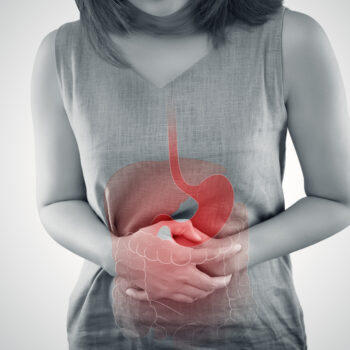
- Gastrointestinal Issues: Symptoms like constipation, diarrhea, bloating, and gas can be signs of an imbalance in the gut flora. 1
- Food Cravings: An imbalance in the gut microbiome may cause food cravings, particularly for sugary or high-fat foods, due to the type of bacteria that thrive on these nutrients. 2
- Mood Fluctuations and Mental Health Issues: A growing body of evidence suggests that gut health is linked to mental health, potentially influencing mood and mental states like depression or anxiety. 3
- Skin Conditions: Problems like eczema, rosacea, or acne might be exacerbated or triggered by an imbalanced gut. 4
- Frequent Illness or Infections: An imbalanced gut may lead to a compromised immune system, making one more susceptible to viral or bacterial infections. 5
Please remember, that these are just potential signs and not definitive indicators of gut dysbiosis. A healthcare professional can provide a more accurate diagnosis and appropriate treatment options.
Digestion isn’t just a gastronomic event; it’s a harmonious symphony orchestrated by interconnected organs. Starting from our senses and culminating in the large intestine, this process involves the esophagus, stomach, small intestine, and more.
Optimizing gut function can have numerous benefits for overall health. However, it’s crucial to consult with healthcare professionals for individualized advice.
The 5 steps to balance your microbiome and optimize gut function (backed by scientific literature):
- Dietary Fiber and Whole Foods: Consuming a diet rich in fiber, fruits, vegetables, and whole grains can promote a healthy gut microbiome by providing essential nutrients and prebiotics. 6
- Probiotic Supplementation: Probiotics, which are beneficial bacteria, can help restore or maintain a balanced gut microbiome. However, it’s essential to consult a healthcare provider for the right strain and dose. 7
- Regular Exercise: Physical activity has been shown to positively influence the gut microbiome, enhancing its diversity and contributing to overall gut health. 8
- Avoid Overuse of Antibiotics: Antibiotics can severely disrupt the gut microbiome. Only use them when prescribed by a healthcare provider and always complete the full course to minimize the risk of creating antibiotic-resistant bacteria.
This is one of the main reasons that I recommend using a combination of herbal and antibiotic treatments when addressing persistent tick-borne illnesses, such as Lyme disease or Babesiosis.
While you may need antibiotics to help get over these infections, using herbals is generally safer for your gut’s health and can address persisters, including cysts and biofilms, as well or better than prescription antibiotics. More herbs often lead to better outcomes with fewer antibiotics and improved gut health. 9
- Manage Stress: Chronic stress has been shown to negatively impact gut health. Methods like mindfulness, meditation, and stress management techniques may help. 10
Remember, these steps are general guidelines and should not replace professional medical advice. Always consult with healthcare providers for diagnosis and treatment tailored to your individual needs.
PAVING THE PATH TO RADIANT WELLNESS
Understanding the intricate interplay between inflammation and gut health isn’t just an academic endeavor; it’s the blueprint for a vibrant life.
Crafting a conscious diet and addressing digestive concerns head-on constitute shields against chronic ailments, nurturing our vitality in a world marred by toxins. Embark on this journey, where inflammation and gut health hold hands, guiding us toward radiant well-being.
As you delve into the intricate interplay between inflammation and gut health, you’re uncovering the secrets to a vibrant life. But remember, the journey to radiant well-being is a personalized one, and we’re here to guide you every step of the way.
Want to dive deeper into these wellness insights and discover how to apply them to your unique health goals?
JOIN OUR COMMUNITY of fellow wellness explorers and gain access to exclusive resources, expert guidance, and personalized support. The path to radiant wellness awaits you.
Ready to take the next step?
LEARN MORE about how you can thrive and how we can embark on this journey, together → HERE.
- REFERENCES
- Thursby, E., & Juge, N. (2017, May 16). Introduction to the human gut microbiota. PubMed. Retrieved September 1, 2023, from https://pubmed.ncbi.nlm.nih.gov/28512250/
- Alcock, J., Maley, C. C., & Aktipis, C. A. (2014, August 8). Is eating behavior manipulated by the gastrointestinal microbiota? Evolutionary pressures and potential mechanisms. PubMed. Retrieved September 1, 2023, from https://pubmed.ncbi.nlm.nih.gov/25103109/
- Foster, J. A., Rinaman, L., & Cryan, J. F. (2017, March 19). Stress & the gut-brain axis: Regulation by the microbiome. PubMed. Retrieved September 1, 2023, from https://pubmed.ncbi.nlm.nih.gov/29276734/
- Salem, I., Ramser, A., Isham, N., & Ghannoum, M. A. (2018, July 17). The Identification of DepB: An Enzyme Responsible for the Final Detoxification Step in the Deoxynivalenol Epimerization Pathway in Devosia mutans 17-2-E-8. PubMed. Retrieved September 1, 2023, from https://pubmed.ncbi.nlm.nih.gov/30065709/
- Belkaid, Y., & Hand, T. W. (2014, March 27). Role of the microbiota in immunity and inflammation. PubMed. Retrieved September 1, 2023, from https://pubmed.ncbi.nlm.nih.gov/24679531/
- Makki, K., Deehan, E. C., Walter, J., & Backhed, F. (2018, June 13). The Impact of Dietary Fiber on Gut Microbiota in Host Health and Disease. PubMed. Retrieved September 1, 2023, from https://pubmed.ncbi.nlm.nih.gov/29902436/
- Hill, C., Guarner, F., Gibson, G. R., Merenstein, D. J., Pot, B., & Calder, P. C. (2014, June 10). Expert consensus document. The International Scientific Association for Probiotics and Prebiotics consensus statement on the scope and appropriate use of the term probiotic. PubMed. Retrieved September 1, 2023, from https://pubmed.ncbi.nlm.nih.gov/24912386/
- Mailing, L. J., Allen, J. M., Buford, T. W., Fields, C. J., & Woods, J. A. (2019, March 1). Reappraisal of Perforasomes of the Superficial Femoral, Descending Genicular, and Saphenous Arteries and Clinical Applications to Locoregional Reconstruction. PubMed. Retrieved September 1, 2023, from https://pubmed.ncbi.nlm.nih.gov/30817665/
- Jernberg, C., Lofmark, S., Edlund, C., & Jansson, J. K. (2022, October 2). . . – YouTube. Retrieved September 1, 2023, from https://pubmed.ncbi.nlm.nih.gov/20688859/
- Konturek, S. (2011, December 1). Stress and the gut: pathophysiology, clinical consequences, diagnostic approach and treatment options. PubMed. Retrieved September 1, 2023, from https://pubmed.ncbi.nlm.nih.gov/22314561/
